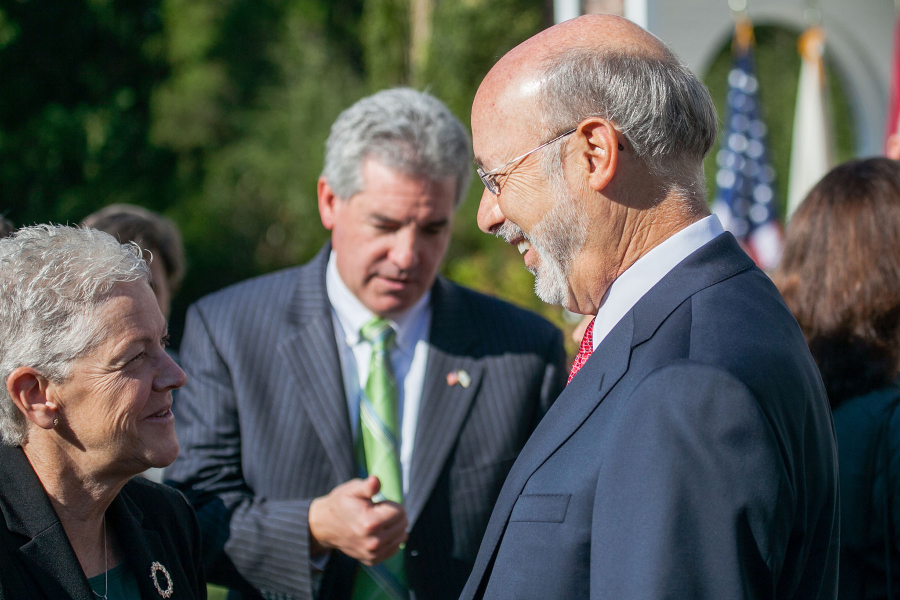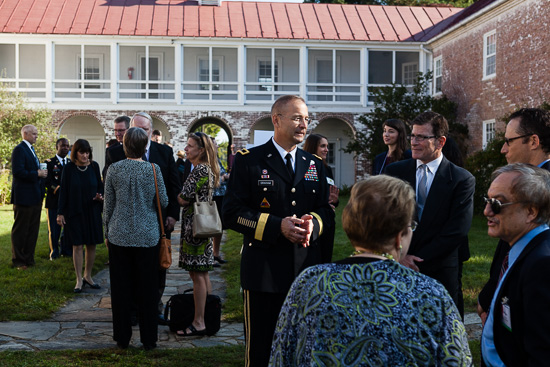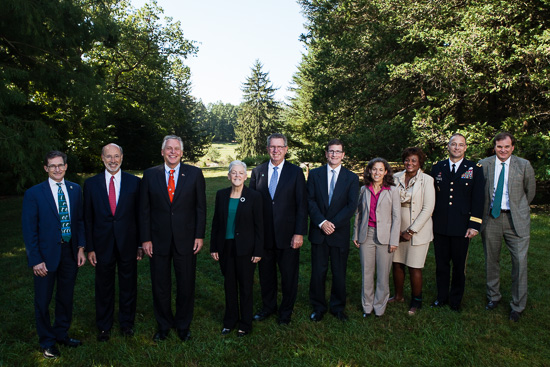Chesapeake Executive Council holds annual meeting to set goals and guidance for Bay Program partners
$28 million in additional funding committed to reduce nutrient pollution in Pennsylvania

Today, at the annual meeting of the Chesapeake Executive Council, each member spoke to the unique challenges facing their jurisdictions in their work to restore the Chesapeake Bay. Notably, the U.S. Environmental Protection Agency (EPA), the U.S. Department of Agriculture (USDA) and the Commonwealth of Pennsylvania committed an additional $28 million to help reduce nutrient pollution in the state.
The Chesapeake Bay Total Maximum Daily Load, or Bay TMDL, sets limits on the amount of nitrogen, phosphorus and sediment allowed to run into the Bay each year. It requires the six watershed states and the District of Columbia to ensure that all pollution-reducing practices needed to fully restore the Bay and its tidal rivers are in place by 2025, with actions in place to achieve at least 60 percent of the reductions by 2017. Nutrient and sediment pollution from Pennsylvania’s portion of the Chesapeake Bay watershed have been reduced, but nitrogen reductions are not on pace to meet Pennsylvania’s 2017 and 2025 goals under the Bay TMDL.
Members of the Executive Council—which represents the seven watershed jurisdictions, a tri-state legislative commission and federal agencies—met to review the state of the Chesapeake Bay Program and set guidance and goals for the coming year at their annual meeting, held at the Virginia State Arboretum in Boyce, Virginia.

“We are seeing real progress through our ongoing collaboration with local, state, regional and national partners to restore the Chesapeake Bay and the creeks and rivers that feed it,” said Executive Council Chair, Virginia Governor Terry McAuliffe. “Our legacy to future generations must include the preservation of this unique resource, which is so crucial to the Commonwealth’s quality of life and our work to build a new Virginia economy.”

The Executive Council also agreed to sign a resolution to support local government engagement: commending the actions taken by local governments to address their wastewater pollution reduction goals and committing to raise awareness about the benefits of investing in protection and restoration efforts at the local level. The Council also elected Virginia Governor Terry McAuliffe as Chair for a second term.
After this year’s annual meeting, on October 6th, Governor McAuliffe will meet to discuss recommendations from the local government, citizen and scientific communities with the council’s three advisory committees—the Citizens Advisory Committee, the Local Government Advisory Committee and the Science and Technical Advisory Committee.
Read a factsheet on the Joint State-Federal Strategy to Accelerate Nutrient Load Reductions in Pennsylvania's Chesapeake Bay Watershed, or learn more about the 2016 Executive Council Meeting.

Comments
There are no comments.
Thank you!
Your comment has been received. Before it can be published, the comment will be reviewed by our team to ensure it adheres with our rules of engagement.
Back to recent stories